
Driving in Iceland in January: What To Expect
- Visiting in Iceland in January
- Weather Conditions in Iceland in January
- Iceland Daylight Hours in January
- Road Conditions in Iceland in January
- Recommended Rental Car for Iceland in January
- Safety Tips When Driving in Iceland in January
- FAQs for Driving in Iceland in January
- Summary of Driving in Iceland in January

January is an excellent time to explore Iceland's stunning nature with a rental car. As winter is in full swing, the days are short, but the long dark nights provide a great chance to witness the aurora borealis on a northern lights tour in Iceland. Plan your winter adventure and learn everything you need to know about driving in Iceland in January!
Whether you opt for a self-drive tour or plan to explore Iceland’s winter wonders independently, booking an SUV or four-wheel-drive rental car will help you stay safe and make the most of this magical month.
This month is perfect for those seeking to experience Iceland’s natural beauty with fewer crowds and a peaceful atmosphere. Since January is part of the low season, you can often find better deals on accommodation in Iceland, allowing you to enjoy Iceland's beauty without breaking the bank.
Driving in Iceland during January is not just about getting from place to place—it's an adventure through snowy landscapes, icy waterfalls, and breathtaking scenery. Learn all you need to know about navigating Iceland’s roads in January, and prepare for a truly unforgettable winter journey.
- Learn more about where to see the northern lights in Iceland
- Read all about the best winter activities in Iceland
Visiting in Iceland in January

A trip to Iceland in January can be a truly enchanting experience, with its snow-blanketed landscapes, breathtaking glaciers, and the possibility of witnessing the northern lights. However, it's crucial to be well-prepared for the harsh winter conditions that can make driving difficult. Here are some essential tips and recommendations for navigating Iceland’s roads in January.
Weather Conditions in Iceland in January
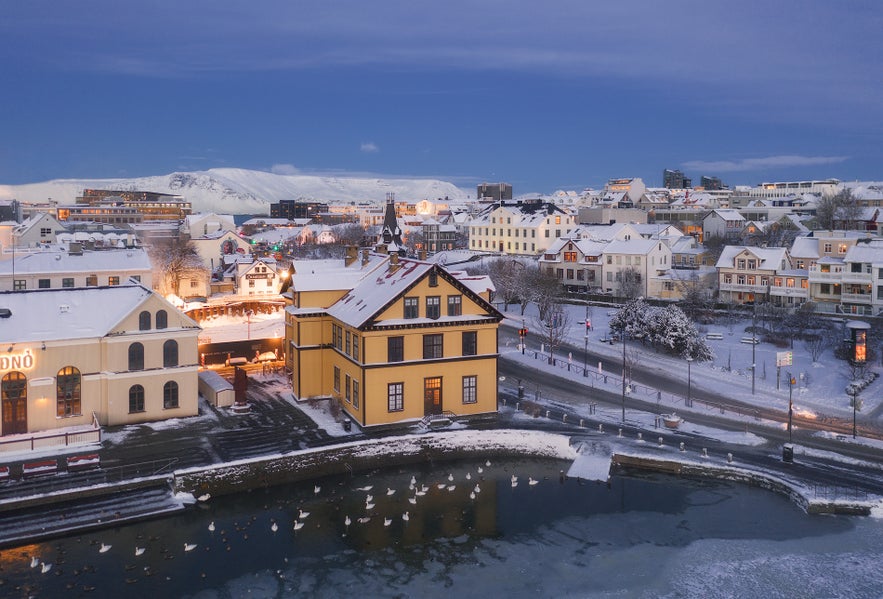
January in Iceland is characterized by cold temperatures, short daylight hours, and unpredictable weather conditions. The average temperature in January ranges from 30°F to 37°F (-1°C to 3°C) but can drop below freezing, especially in the northern parts of the country. Snowfall is common, making roads slippery and challenging to navigate.
Winds can be strong and gusty, adding to the difficulties of driving in Iceland during this time of year. Blizzards and whiteouts are not uncommon, reducing visibility and increasing the risk of accidents on the road. It is important to be prepared for rapidly changing weather conditions and to check the forecast regularly before embarking on any journey.
Despite the challenging weather, January in Iceland offers a unique and beautiful landscape covered in snow and ice. The dark winter days are contrasted by the stunning natural beauty of the country, making it a magical time to explore the many available sightseeing tours in Iceland, as long as you are prepared for the harsh conditions.
-
Learn more: The Weather & Temperature in Iceland
Iceland Daylight Hours in January

In January, Iceland experiences long nights and short days, with only 4-5 hours of daylight on average due to its high latitude. Daylight hours vary by location, with southern regions like Reykjavik receiving slightly more light than northern areas like Akureyri. Despite limited daylight, Iceland's snowy landscapes, icy waterfalls, and the chance to see the northern lights make it a magical winter destination.
However, if you only plan on staying in the southern region, you might be interested in a day tour with waterfalls and the glacier lagoon. Be sure to pack warm clothing and embrace the darkness as part of the unique Icelandic experience.
- Learn more about Akureyri, the Capital of North
- Explore the Top 11 Waterfalls in Iceland to See in Winter
Road Conditions in Iceland in January
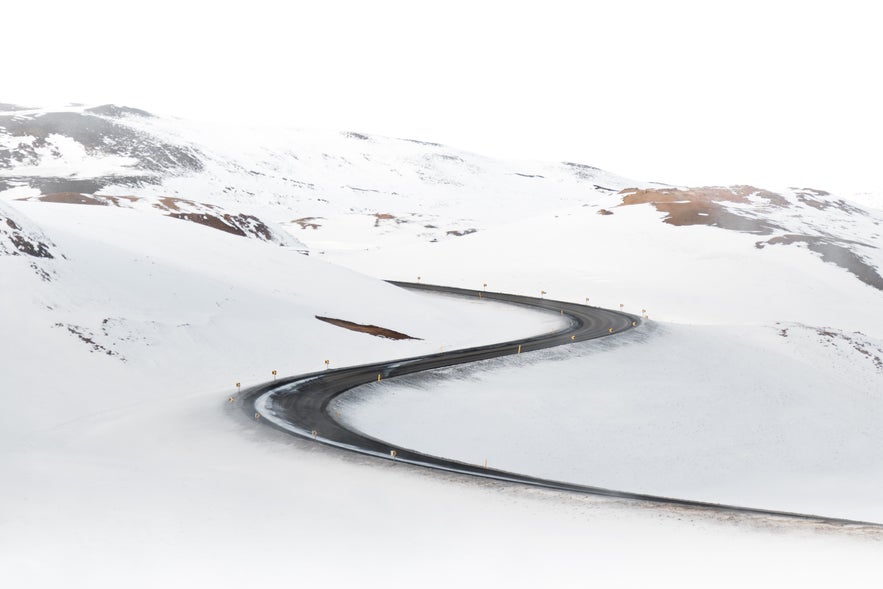
Driving in Iceland in January can be challenging due to the unpredictable weather conditions. The roads can be icy and snow-covered, so it's crucial to have a vehicle that's properly equipped for winter conditions.
Major roads like the Ring Road are usually well-maintained, but sudden weather changes can be tough to handle and may lead to temporary closures. Secondary roads, especially in rural regions, are more likely to be covered in snow and ice, making them difficult or even impossible to navigate. It's essential to monitor Iceland's weather forecasts and check local road conditions frequently.
Be sure to keep your travel plans flexible to adapt to changing weather. If you're not confident about driving in snowy and icy conditions, consider choosing guided winter tours or packages to explore Iceland instead.
Recommended Rental Car for Iceland in January
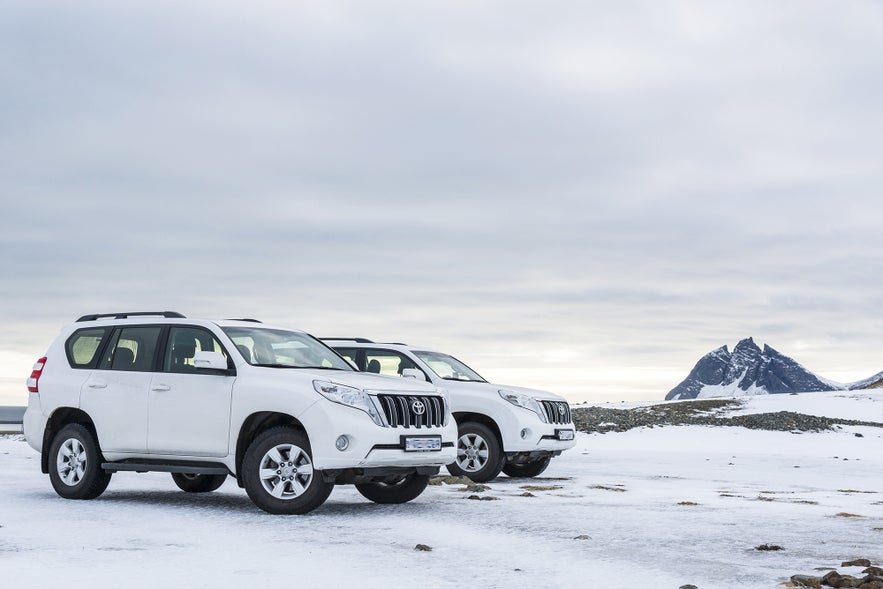
When it comes to driving in Iceland in January, it's crucial to choose the right rental car that can handle the challenging winter conditions. You might want to consider renting a car at Keflavik Airport to have it ready as soon as you land. Here are some top choices for rental cars that are well-suited for Iceland in January:
SUVs are a popular choice for driving in Iceland in January due to their sturdy build and all-wheel drive capabilities. They can handle the rough terrain and icy roads that are common during the winter months. Some recommended SUV options for Iceland in January include the Toyota RAV4, Subaru Outback, and Jeep Wrangler.
For those looking for even more power and ruggedness, you can rent a luxury vehicle or a 4x4 truck, which are both great options for driving in Iceland in January. These vehicles can handle the most challenging of winter conditions and provide added safety and stability on icy roads. Some top choices for 4x4 trucks in Iceland include the Toyota Hilux, Ford F-150, and Nissan Navara.
- Read more: Best Advice for Renting a Car in Iceland
Safety Tips When Driving in Iceland in January
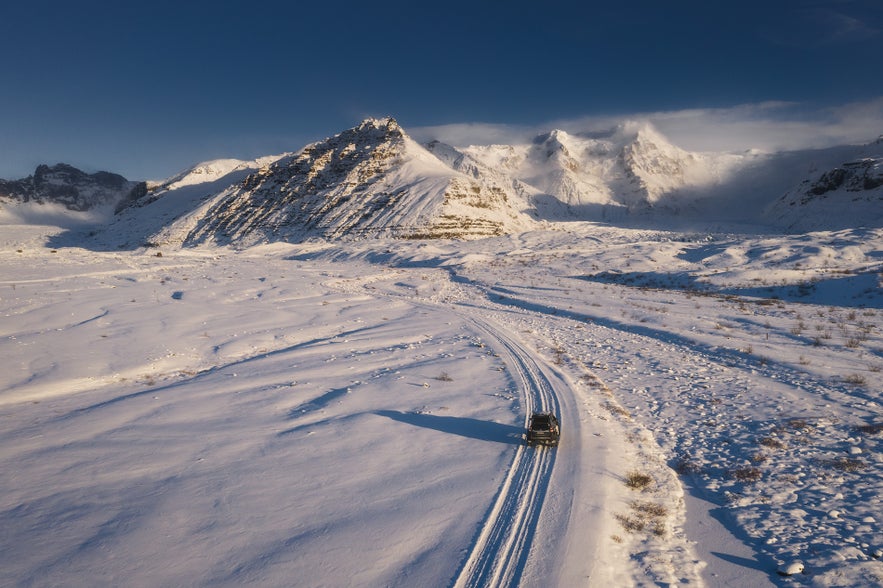
Driving in a new country can be challenging, especially when conditions are harsh. If you're planning to drive in Iceland during January, here are some key tips to keep in mind:
-
Check road conditions daily: Icelandic weather can be unpredictable, especially in January. Make it a routine to check the road conditions and weather forecasts each day before setting off. Be sure to pay attention to any weather warnings!
-
Winter tires are essential: By law, all rental vehicles must be equipped with winter tires from November 1st to April 14th. This is critical for safe driving on icy or snowy roads.
-
Drive according to conditions: Even if you're familiar with winter driving, remember that Iceland's weather can change suddenly. Adjust your speed to the conditions, and always maintain a safe distance from the vehicle ahead.
-
Be ready for different road types: Main roads are typically well-maintained, but secondary roads, particularly in rural areas, can be more difficult. Expect narrow, winding roads, and be on the lookout for sharp turns or sudden dips.
-
Keep an eye on fuel: In rural areas, gas stations can be few and far between. It's a smart habit to keep your fuel tank at least half full to avoid running out in remote locations.
-
Headlights on at all times: In Iceland, it's mandatory to have your headlights on both day and night. This improves visibility, especially in overcast or snowy conditions, and helps ensure other drivers can see you.
-
Carry an emergency kit: Always keep an emergency kit in your car. It should include essentials like a first-aid kit, warm blankets, snacks, water, and a flashlight.
-
No off-roading: Off-roading is illegal in Iceland as it can harm the island's delicate environment. In snowy conditions, it can be difficult to see the proper paths, so stick to marked and clear roads.
-
Know how to handle emergencies: If an emergency arises, dial 112, Iceland’s emergency number. It's also a good idea to submit your travel plan on the SafeTravel website. Make sure to inform your rental company of any incidents or accidents.
-
Prioritize safety: Iceland’s stunning landscapes are breathtaking, but the conditions can be tough, especially in January. Drive carefully and enjoy your adventure!
- Check out our Ultimate Guide to Gas Stations in Iceland
FAQs for Driving in Iceland in January

Is an International Driving Permit necessary for driving in Iceland?
If your driver's license is written in the Latin alphabet and includes a photo, an International Driving Permit isn't required. Otherwise, you’ll need to obtain one.
Can I drive the entire Ring Road in January?
Yes, but be prepared for extreme winter conditions, especially in the north and east. These areas will have heavy snow and ice, making it necessary to have a 4x4 vehicle and solid winter driving experience. The South Coast and Snaefellsnes peninsula are usually more accessible, but still require you to be cautious.
What should I do if I encounter a snowstorm while driving?
Reduce your speed, turn on your headlights, and find a safe place to pull over if visibility becomes too poor. Always pay attention to weather warnings and avoid driving in dangerous conditions. If needed, dial 112 for help in an emergency.
How do I handle steep inclines or declines, especially in slippery conditions?
Use a low gear, maintain a steady, moderate speed, and avoid sudden braking or acceleration to prevent skidding.
What are common mistakes visitors make when driving in Iceland in January?
Mistakes include driving too fast for winter conditions, underestimating travel times, not checking the weather regularly, and stopping on the road to take photos, which can be dangerous in snowy conditions.
Summary of Driving in Iceland in January
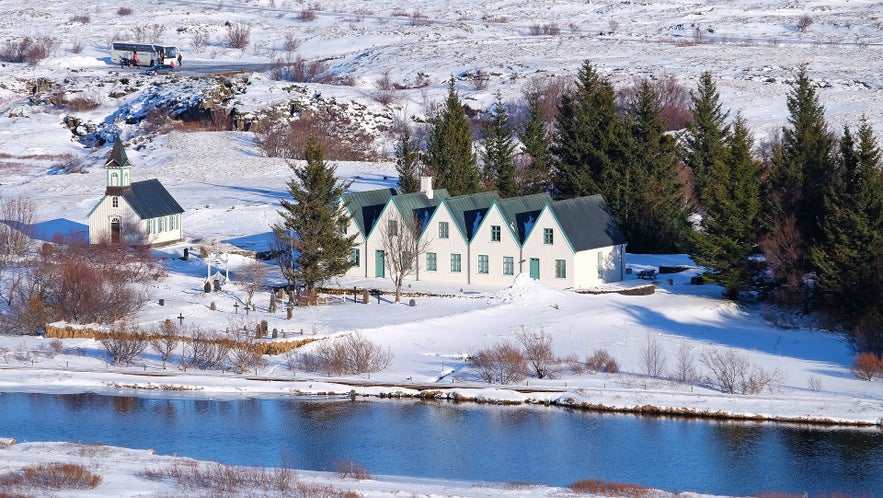
Visiting Iceland in January offers a magical experience with snow-covered landscapes, stunning glaciers, and the chance to see the northern lights. However, the cold temperatures, limited daylight, and unpredictable weather require careful preparation, especially for driving.
Temperatures range from 30°F to 37°F (-1°C to 3°C), and snowfall is common, creating icy roads and challenging conditions. Major roads like the Ring Road are usually maintained, but secondary roads can be difficult to navigate, making it essential to check weather and road conditions daily.
For safe travel, renting a 4x4 vehicle equipped with winter tires is highly recommended. Always drive cautiously, monitor fuel levels in remote areas, and carry an emergency kit. Headlights must be on at all times, and off-roading is illegal to protect the environment.
In case of emergencies, dialing 112 is important, and submitting your travel plan on SafeTravel is a good precaution. Despite the challenges, Iceland's winter beauty makes it a stunning destination in January for those who are well-prepared and prioritize safety.
We hope you are now well equipped to drive in Iceland during the month of January. What places are you planning to visit? Do you have any further questions about driving in January? Let us know in the comments below!
Other interesting articles

Avoiding the Crowds in Iceland
What are the most popular times of the year for travellers visiting Iceland? How can you secure the best chance of avoiding the crowds at this country’s most beloved natural attractions, and what ar...Read more
Tour Bus Stops & Pick-Up Locations in Reykjavik | All You Need to Know
Learn about the 14 bus stops for tour pick-ups in Reykjavik. Locate which specific bus stop is closest to your accommodation. Find out what to do if you miss the bus, the tour gets canceled, and how...Read moreGuide to Iceland | The Story of the Leading Travel Agency of Iceland
What is Guide to Iceland? When was Guide to Iceland founded and why? How has Guide to Iceland changed since its conception? Continue reading to learn all about the leading travel agency of Iceland....Read more

Download Iceland’s biggest travel marketplace to your phone to manage your entire trip in one place
Scan this QR code with your phone camera and press the link that appears to add Iceland’s biggest travel marketplace into your pocket. Enter your phone number or email address to receive an SMS or email with the download link.





















